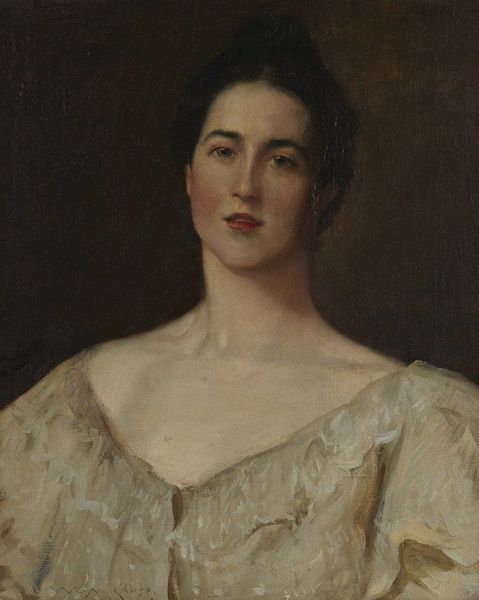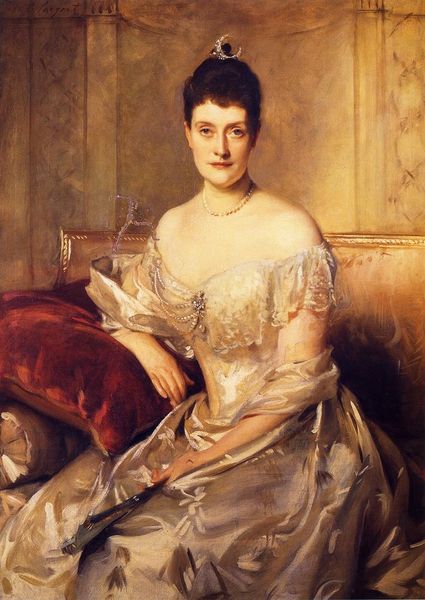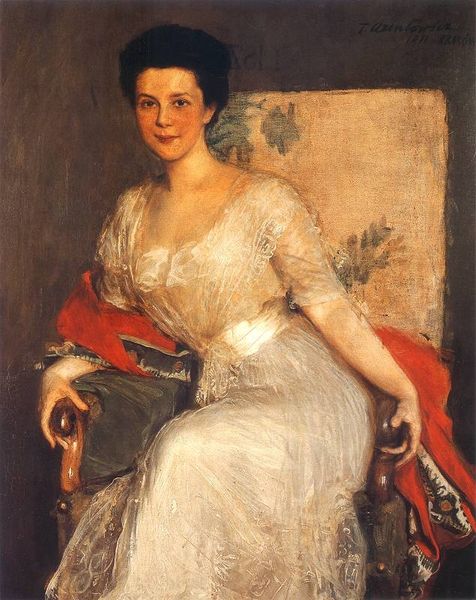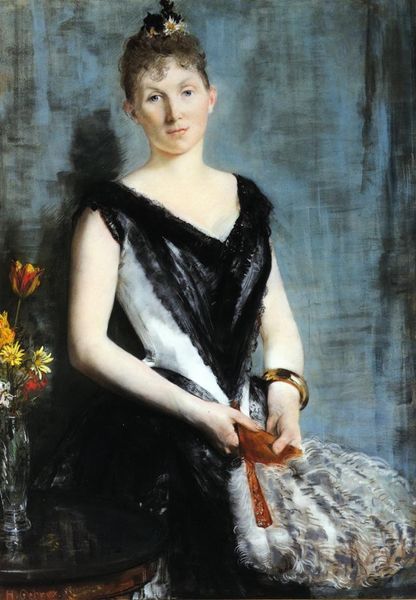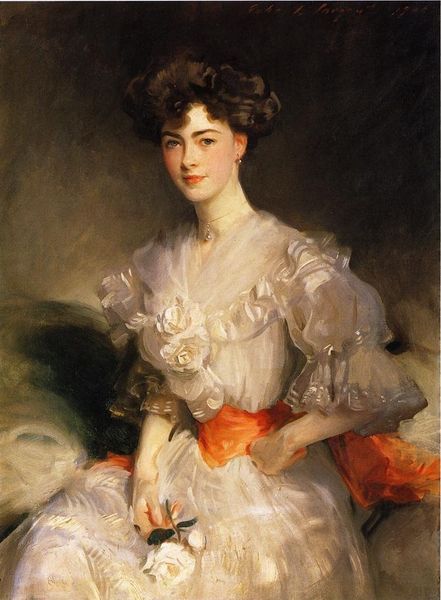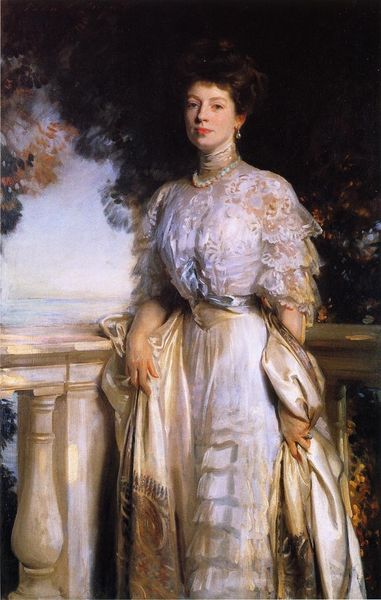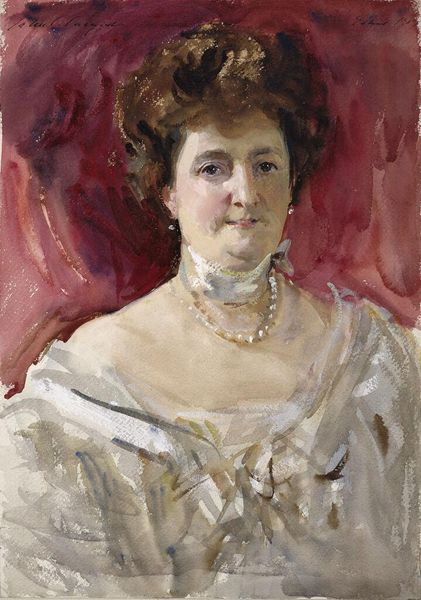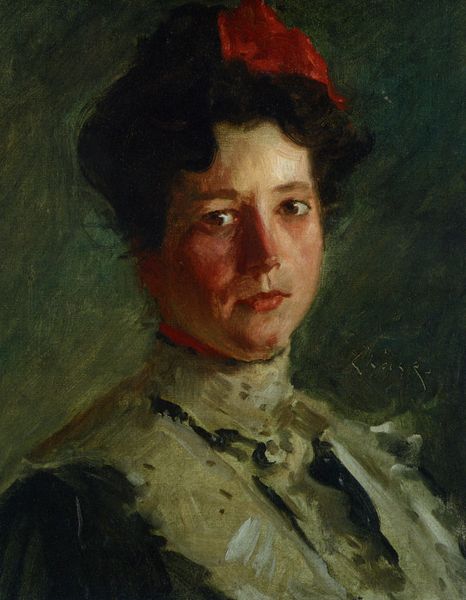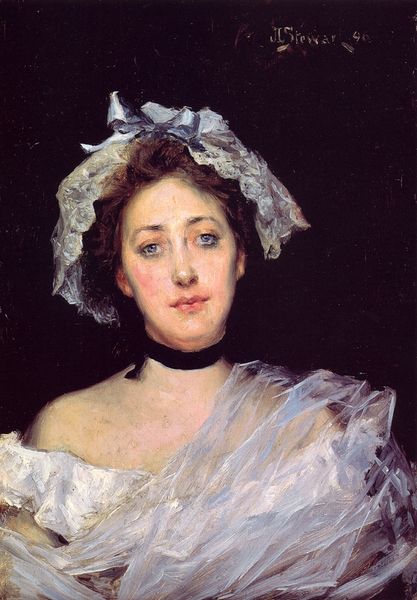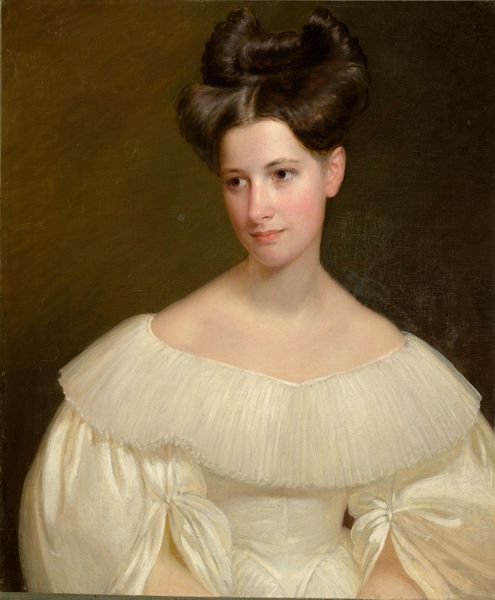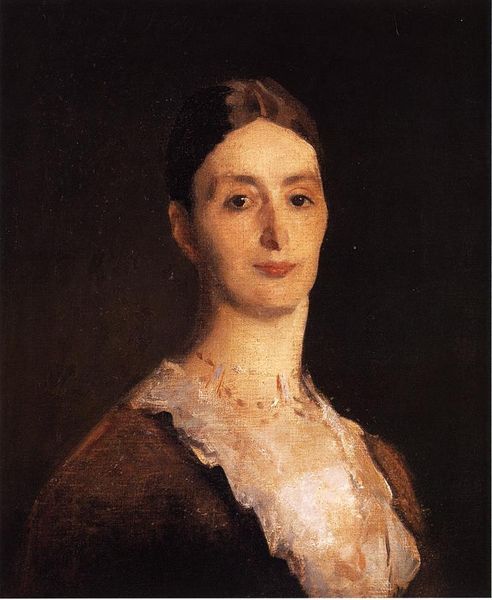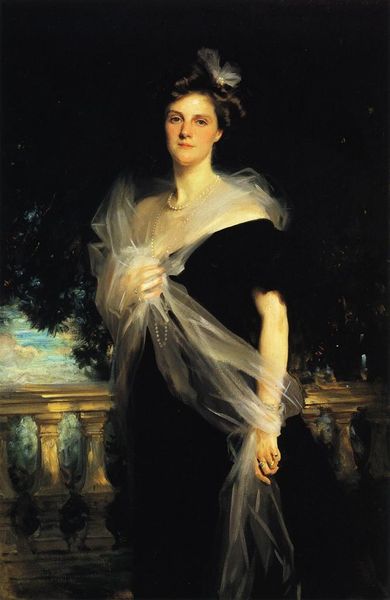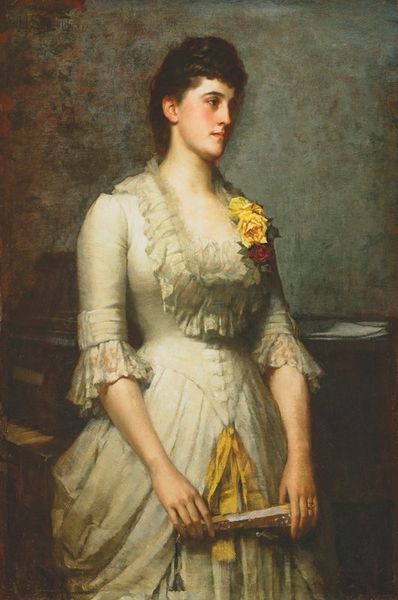
Dimensions: 88.9 x 63.82 cm
Copyright: Public domain
Editor: Here we have John Singer Sargent's portrait of Mrs. Gardiner Greene Hammond, painted in 1903. It's an oil painting with a rather soft, ethereal quality, especially the treatment of her dress. What do you see when you look at it? Curator: Well, I'm immediately drawn to the dress itself. It's all froth and delicate lace. Consider the labor involved in creating such a garment back then. We’re not just looking at the portrayal of wealth; we're implicitly looking at the vast network of seamstresses, lacemakers, and textile workers who made that wealth visible and tangible through their craft. What do you think this reveals about societal roles during this period? Editor: That's interesting; I hadn’t thought of the dress that way, more as a beautiful detail than a signifier of production. So you're suggesting that Sargent's work isn’t *just* about capturing Mrs. Hammond's likeness, but about showcasing the economic system supporting her lifestyle? Curator: Precisely! It’s about the means of presentation and production. The very brushstrokes of the painting – consider how deliberately Sargent renders the fabric, giving texture, dimension. Doesn't that almost elevate dressmaking itself to a form of art? Editor: I suppose it does. It changes how I view these sorts of portraits now, knowing there's an implied underlayer of labor embedded within them. I thought I was just appreciating a pretty picture! Curator: And there *is* beauty in it, undoubtedly. However, engaging with the process and materiality allows for a more comprehensive understanding. We must acknowledge that beauty itself is often the product of a very particular mode of making. Editor: Definitely. It’s given me a fresh appreciation, and a lot more to think about than just surface appearances. Curator: It's wonderful to reconsider what these kinds of artworks can teach us, then.
Comments
No comments
Be the first to comment and join the conversation on the ultimate creative platform.

